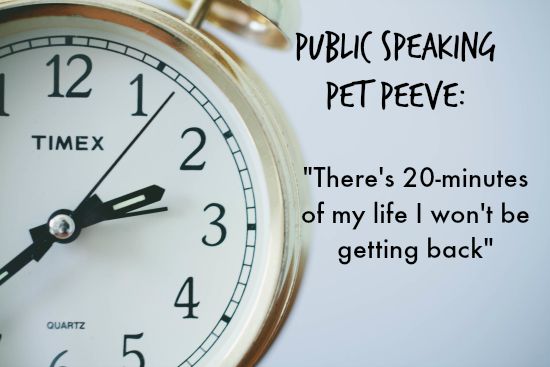Make Marketing Suck Less
Public Speaking Pet Peeve: Blowing the Close
By Michelle Mazur > July 28, 2015
Filed Under Presentations
 Were you ever a fan of the TV show Lost?
Were you ever a fan of the TV show Lost?
I never got into it, but my husband loved that show. He was addicted and couldn’t wait to find out how it was going end. How were all the storylines going to weave in together?
After he watched the series finale, he was totally pissed. The ending was lame. He said to me “Well, there’s 6 years of my life I can’t get back.”
Have you noticed that no one ever talks about the pilots of TV shows, but everyone talks about the endings of shows? People are still obsessed with the fate of Tony Soprano. The final scenes of 6 Feet Under haunt me still. And Mad Men went from a WTF ending to a that’s amazing ending in the blink of an eye.
Endings matter on TV and they certainly matter in your speech.
But most speakers (and once again you, my friend, are not most speakers) utterly screw up a great speech in the final fleeting moments.
This leads to my third pet peeve:
Pet Peeve #3 – Blowing the close
Nothing makes Michelle sadder than seeing a great speech that is ruined by its ending.
The very last words of your speech are what the audience remembers MOST about your presentation (those smarty pants social psychologists call this the Recency Effect).
If you have ever ended your presentation with:
- “Anyone have questions for me?”
- “That’s all I have for you today.”
- “I’m out of time. Thank you.”
- *drops the mic* and flees
- “Run to the back of the room and buy!”
Then you’re blowing the close of your speech and losing a valuable opportunity for the audience to be able to clearly articulate and then spread your message.
The final words of your speech are some of the most precious real estate you have in any presentation. You’ve got to send the audience out with a battle cry, not a “whelp, I’m done” shrug of the shoulders.
When you nail your speech, your audience becomes your advocates and wants to spread and talk about your message. The last words you utter on that stage should enable them to do that with ease.
Don’t let the final thought of your speech be an afterthought. Instead, make sure that it’s a well-crafted, tweetable way to spread your message.
[Tweet “Don't blow the close: send your audience out with a well-crafted, tweetable battle cry.”]
If you want help discovering those crucial last words that have your audience spreading your message Grab your copy of the Audience Journey and never blow your close again.
Next week we will tackle pet peeve #4 which is all the rage in presentations right now, but just because it’s on trend doesn’t mean it’s creating an great experience for your audience. It’s actually making their heads explodes (slight exaggeration).
Create Your One-of-a-Kind Message
Your 3 Word Rebellion is the Key to Growing Your Business & Impact






